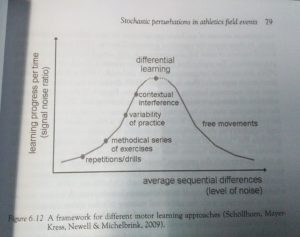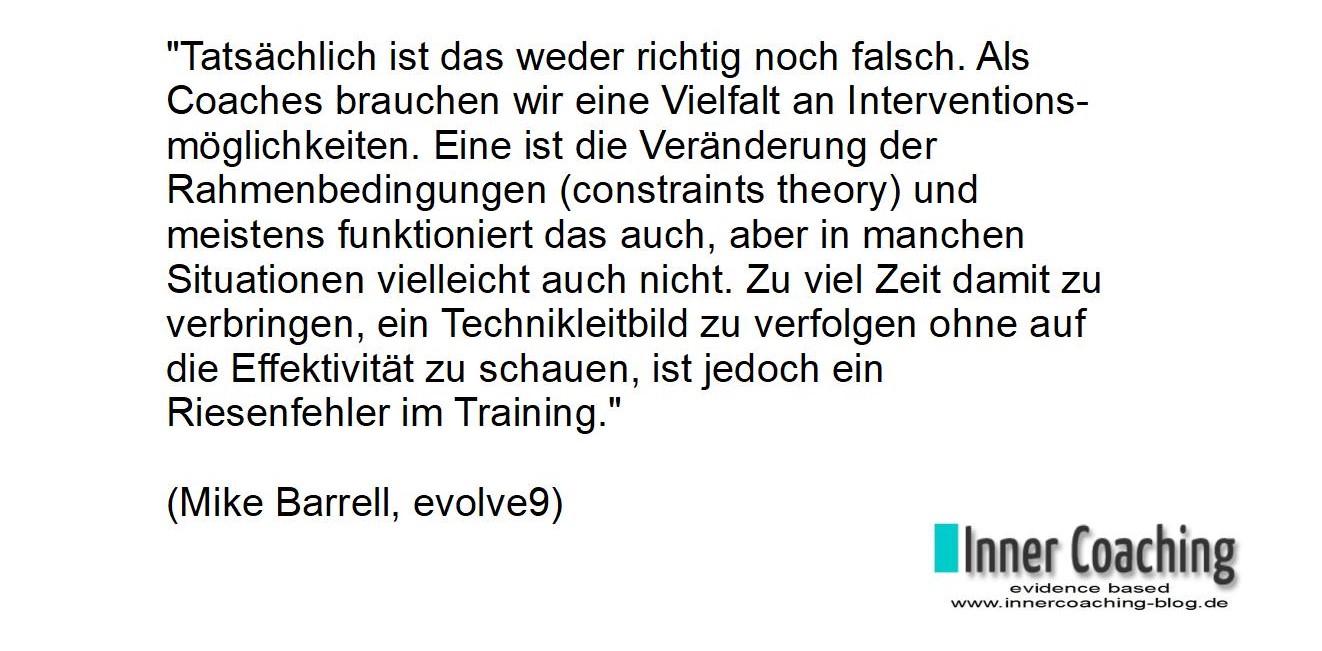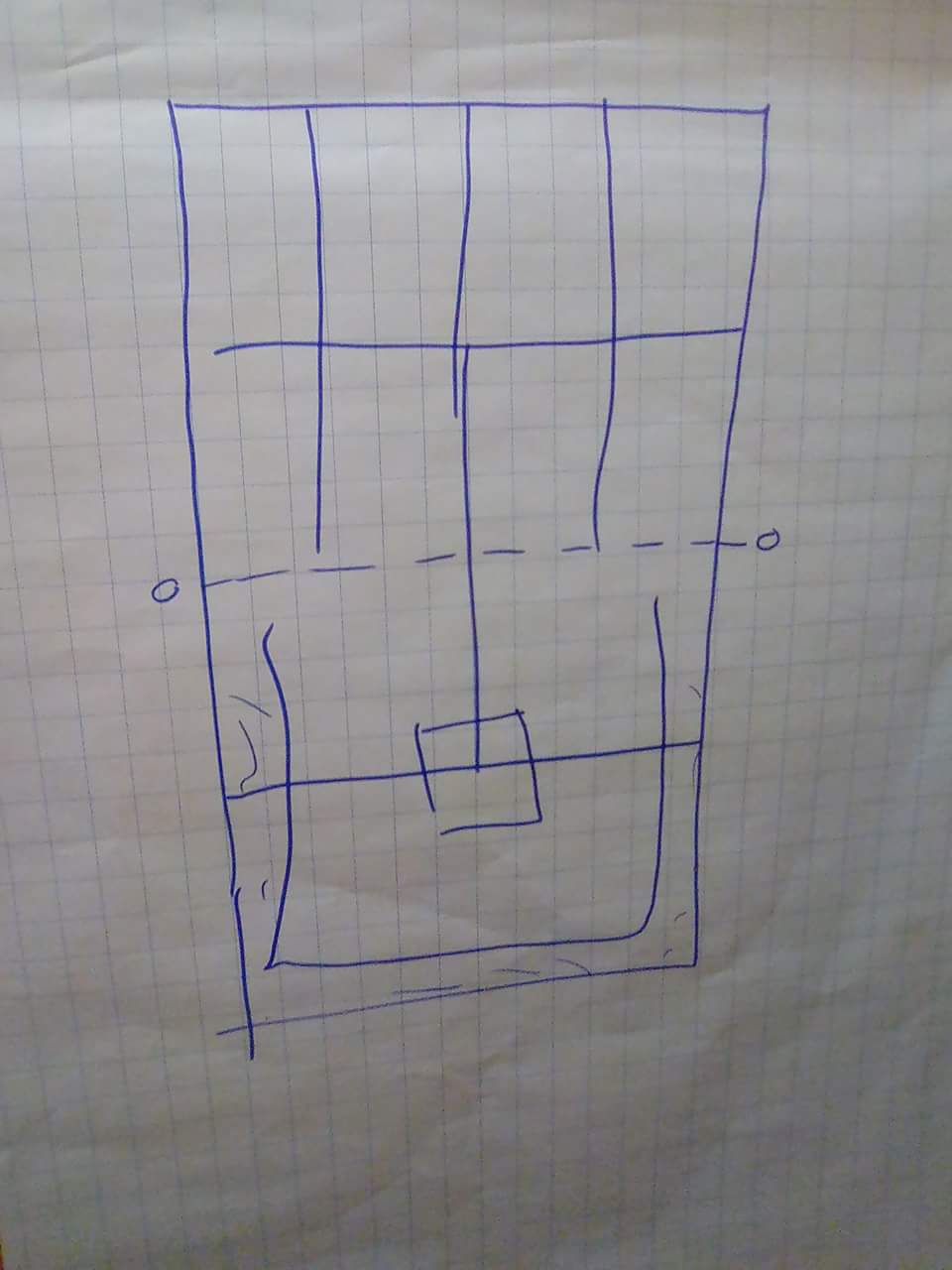A Constraints Led Approach is not ‘just’ Another Game-Centred Approach
Schlagwort-Archive: constraints led
Was nun?
Constraints
(for t he english text scroll down, thx)
he english text scroll down, thx)
In einem systemdynamischen und non-linearen Lernansatz geht es darum, über die Veränderung der Rahmenbedingungen und der Aufgabenstellungen den Spieler*innen eine individuelle Entwicklung von Technik und Taktik zu ermöglichen. In diesem auch „constraints-led-approach“ genannten Zugang fordern neue Situationen neues Denken und neue Lösungen heraus. Dieser Ansatz ist nach dem aktuellen Stand der wissenschaftlichen Forschung effektiver und nachhaltiger als der traditionelle methodische Ansatz in dem der Coach der Experte für die Lösungswege ist und diese vorgibt (v.a. bei der Technikentwicklung).
In einer non-linearen Pädagogik ist es aber trotzdem noch zu oft der Coach, der die Rahmenbedingungen verändert um ein von ihm vorgegebenes Bewegungsziel zu erreichen oder um eine bestimmte nach seiner Erfahrung erfolgreiche oder in Lehrbüchern beschriebene Technik-/Taktikvariante zu „provozieren“. http://www.tms-tennis.de/inner-coaching/happy-easter-or-the-easter-bunny-pedagogy/
Das differenzielle Lernen (nach Wolfgang Schöllhorn) geht da deutlich weiter und überlässt den Spieler*innen die Suche nach individuellen Lösungen für neue Aufgabenstellungen.  Die Rahmenbedingungen werden ständig verändert und nicht wiederholt (ständige Variation). Dabei können auch „Fehler“ eingebaut werden. Dies entspricht einer konsequenten Umsetzung systemtheorischen Denkens in dem der Coach vollständig auf die Selbstorganisationsfähigkeit der Spieler*innen vertraut. Neue Erkenntnisse aus der Kreativitätsforschung im Sport unterstützen dieses Denken.
Die Rahmenbedingungen werden ständig verändert und nicht wiederholt (ständige Variation). Dabei können auch „Fehler“ eingebaut werden. Dies entspricht einer konsequenten Umsetzung systemtheorischen Denkens in dem der Coach vollständig auf die Selbstorganisationsfähigkeit der Spieler*innen vertraut. Neue Erkenntnisse aus der Kreativitätsforschung im Sport unterstützen dieses Denken.
In der im folgenden beschriebenen Trainingseinheit Constraints weiterlesen
Happy Easter or the „Easter-Bunny-Pedagogy“
Happy Easter, dear innercoaching-blog.de followers!
 This reminds me of a conversation with Prof. Wolfgang Schoellhorn in which he explains the differences between differential learning and a hidden traditional „I-know-how-to-do-it“ .coaching philosophy
This reminds me of a conversation with Prof. Wolfgang Schoellhorn in which he explains the differences between differential learning and a hidden traditional „I-know-how-to-do-it“ .coaching philosophy
He calls this „Easter Bunny Pedagogy“: the coach hides the solution (stroke technique) in front of the player and later he suggests that the player has found the (given) solution by himself. Happy Easter or the „Easter-Bunny-Pedagogy“ weiterlesen
Constraints
Thinking about constraints in Constraints Led Coaching in daily tennis practice. Tms-die mobile Tennisschule
Quality before quantity
Differential learning enhances skills

Prof Wolfgang Schoellhorn has published about new methods in motor learning in sports research. His studies about differential learning form one of the most important fundamentals in our learning and coaching approach.
We transform this theory in games and drills for tennis. In the book „Motor learning in practice – a constraints led approach“ published by Jan Renshaw, Keith Davids and others, Schoellhorn describes in the article „Stochastic perturbations in athletics field events enhance skill acquisation“ of 2010 why differential learning improves processes in comparison to traditional methods significantly.
But read here: Stochastic perturbations in athletic field events
Focus on the score 2
Players A and B play points from the baseline, they play until 10. Coach is playing the ball in:
-the first of seven points starts with player A. A has seven strokes to win the point. If he hits the eighth, B wins the point
-with the second ball A has six strokes to win the point. If he hits the seventh, B wins the point
-with the third ball A has five strokes to win the point,…..
-with the seventh ball A has one stroke to win the point. If he hits second, B wins the point
-now B starts with the first stroke and has maximum seven strokes to win the point…..
variations
- player A or B play the ball in
- with service
Focus on the score
Great book about Tennis psychology with a lot of drills. Most of them can be used in a constraints led approach. The following drill sets constraints by changing the rules for counting points. (Miguel Crespo, Machar Reid: Tennis Psychology, 200 + practical drills and the latest research. London 2006)
Players play points from the baseline: -the first point played counts as 1 point -the second and third point count as 2 points each -the fourth and fifth point count as 3 points each -the sixth and the seventh point count as 4 points each -the eighth and ninth points played count as 5 points each -the tenth point played counts as 6 points. Players play 2 sets of 10 points. The same player serves throughout the set.
Alternative Wege im Tennistraining
Hier finden Sie die Präsentation zu meinem Vortrag mit Praxisdemonstration bei der C/B-Trainer*innen-Fortbildung beim Bayrischen Tennisbund in Oberhaching im Oktober 2017. Vielen Dank an die Teilnehmer*innen für Ihre Fragen und Diskussionsbeiträge.
Die meisten der in München vorgestellten Trainingsformen finden Sie über die Suche-Funktion im Blog oben rechts. Einfach „Drill“ eingeben.
This is the presentation at the coaches conference at the BTV in october 2017. It includes informations about „new“ or „alternative“ ways of coaching tennis evidence based.


